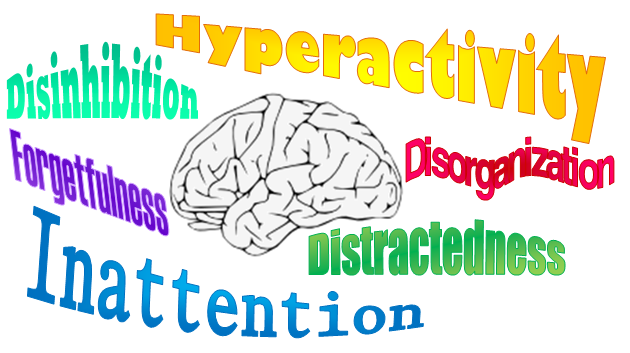The following 40 strategies are just a small sample from my FULL list of
240 STRATEGIES FOR REACHING, TEACHING, & PARENTING
CHILDREN & YOUTH WITH ADD AND ADHD AT HOME AND SCHOOL.
Get the other 200, and you'll never be stymied by active and/or distracted behavior ever again!
Get the full list NOW for just $29.99 !

WOW! .. 240 essential strategies for helping kids with ADHD make better behavior choices!
STRATEGIES FOR REACHING & TEACHING YOUTH
WITH ADD AND ADHD AT HOME & SCHOOL
It's the most common mental health disability. Its characteristics are well known:

Nearly every classroom with have at least one learner with ADHD. Somewhere between 7 and 13% of children and youth suffer from it. About 10% of homes have at least one child with the condition.
Working effectively with ADHD kids requires familiarity with, and proficiency in, skills that help our students to better manage the disabling actions that accompany their neurological condition. It also requires that we remain in the here-and-now as we use cool heads to address the errant actions. It is essential that we master the approach in which we react in a serene manner much akin to the navigation devices that we use in our cars. If a mistake is made, we remain tranquil and engage in "Recalculating". We then attempt a new approach to our destination.
How though do we develop such a calm and restrained approach? I recently read a short, but essential summative article on this mental management topic (Click here). I know too, from experience, the understanding the condition and being proficient in effective strategies for helping ADHD-effected students does a great deal to sooth the savage mindbeast.
The research literature has identified
classroom characteristics that promote success for students with ADD and
ADHD. Predictability, structure, short working periods, a small teacher-to-pupil
ratio, individualized instruction, an interesting curriculum, and lots
of positive reinforcement are all important to student progress.
Researchers have also identified optimal teacher characteristics.
They include positive academic expectations, personal warmth, patience,
humor, consistency, firmness, frequent monitoring of student work, and
knowledge of behavior management strategies.
In addition to awareness of the general principles, most of us want direct, what-to-do and how-to-do-it strategies... Lot's of them! On this page, you'll find 40 essential classroom practices that have been excerpted from my extensive listing of 240. Remember that these ideas that you read here today are merely the surface of a very deep professional pool of effective interventions.

Ready?? OK. Here are 40 of the 240 essential practices for helping kids with ADHD make better behavior choices.
Creating the Appropriate Mindset for Effective Practice
- Identify and manage emotions: Primary feelings like frustration and disappointment are susceptible to metamorphosing into the secondary emotion of anger (and the unfortunate actions that emanate from it).
- Utilize “cognitive behavioral thinking”. Realize that the emotions that develop within us are dependent on how we “size up” a situation. If we view a student’s behavior as being intentionally irritating or disruptive, negative emotions will unfold, bringing forth caustic and punitive reactions. When we view the student’s actions as being the unfortunate manifestation of a disability that the youngster did not choose to possess, empathy and compassion arise. Our desire is to now to support and assist, resulting in effective professional actions of which we can be proud.
- and 3 more in the total ADHD listing
Designing the Learning Environment
- Employ study carrels or seat the student in the area of the classroom with the least distractions, and/or face the desk toward the wall. However, do not isolate the youngster for long periods of time as this practice may stigmatize him/her. Assign the student to engage in group work too, making certain to implement procedures for productive group work.
- and 6 more in the total ADHD listing
Preventing and Calming Overactive Behavior
- Develop rapport with the student. It is human nature to strive to please those whom we like, admire, and respect. ADD/ADHD youngsters are more likely to respond to emotional connections than contingent consequences.
- Develop a silent signal system. Devise non-verbal signals to indicate “I’ve seen your hand and will get there as soon as I’m able.”, “Self check your actions and correct them.”, “Did you agree with the other student’s answer?” (thus assuring that the learner has a chance to respond each and every time s/he wishes to do so).
- The minds of kids with ADHD are more focused when they are able to move. Allow the student to squeeze a squishy ball, sit (and wobble) on an inflatable "donut" ring, or kick/place feet up on a strip of inner tube or bungee cord that is stretched low to the floor between the front supports of a desk.
- Assign two seats to the over-active student. When s/he simply can't stay in that first seat any longer, s/he is allowed to stand up and walk to the other near-by seat. There, s/he will work until the urge to move is again overwhelming. Then the other seat is re-entered.
- During independent work, allow the student to move around in a designated area of the classroom while writing on a clipboard. This privilege is allowed only if the student remains on task. The student is directed to return to the desk at the 2nd warning (but can re-earn the privilege by focusing for a minute or two at the desk). Make certain that the student understands that you (or a timer) decides when s/he can again leave the seat.
- Use the powerful differential reinforcement procedures to reduce inappropriate behaviors, increase appropriate ones, and build replacement actions.
- “Shape” the desired behavior. Build the behavior that you would like to witness via a procedure known as “shaping” (This link leads to a free 20 minute video from the Positive Parenting Practices video series). The youngster, upon having success at a rough equivalent of the appropriate action, is giving a new goal to attain. Each progression brings the youngster closer to the final behavior goal.
- Mark a 3 foot by 3 foot (1 meter by 1 meter) area on the floor in which the youngster can exercise and vigorously move as needed (or directed by you). This square is placed in a part of the classroom where others would be distracted the least.
- and 30 more in the total ADHD listing
Planning Your Lessons
- When planning and implementing lessons, intersperse activities and/or work breaks within longer lessons/academic periods.
- Plan ahead, preparing for possible eventualities (e.g., increase in activity level due to medication wearing off, unstructured times, resistance or errant actions in a large school gathering, etc.). Bring along supports for those events (e.g., a book on a topic of interest to the student, educational games on an electronic device, etc.)
- and 6 more in the total ADHD listing
Starting Your Lessons
- Use alert cues to get the student's attention before giving directions. For example, you might whisper “Anyone who can hear me; please raise your hand”. This gains the attention of other students who wonder why hands are raised. Then say “Anyone who can hear me, please clap twice.” This gains the attention of more students. Then say something that brings a quiet response such as “Anyone who can hear me; tug on your ear lobe.” Follow with “Thank you my wonderful scholars. Let’s use those ears to hear and understand what we are going to do next.”
- Praise some other students for displaying appropriate actions. Then expand the compliance and cooperation via “behavior auctioneering”. Say something akin to “I’ve got 4 scholars with notebooks on their desks. Can I get 6? Wow… 8! Can I get more? Yes… table 4 gives me 3 more notebooks out.” and so forth in order to draw in off-task learners.
- Place instructions on an audio devise so that it can be replayed by the student as needed.
- and 16 more in the total ADHD listing
Making Lessons More Interesting
- Ensure that your style of presentation is enthusiastic and interesting. (We have to be excited about teaching if we want our kids to be excited about learning.)
- Use game formats to teach and/or reinforce concepts, information and skills.
- and 10 more in the total ADHD listing
Keeping The Student with ADHD On Task
- Provide shorter tasks, perhaps divvying up the longer task into parts with you checking each part as it is completed. The student is provided with reinforcement for remaining on task and completing a task, and we then have the opportunity to interact positively and detect any errors early-on to correct them.
- Make a paper or plastic tube that the student uses as a telescope, keeping you in view (and blocking out other distractions). Make certain that it would not hurt the eyes if brought to the face too quickly or inaccurately.
- At the sounding of the preset tone, the student marks whether s/he was on task for the entire time since the previous sounding of the timer (interval recording). This procedure works best when the learner has made good progress in the at-the-moment timer version.
- Implement “precision learning” practice sessions to create short periods of high focus. The student is given a minute or two to make as many “meaningful marks” as possible. On math problem sheets, a meaningful mark would be numbers and symbols/lines. In written work, it would be number of letters or words.
- Attach sandpaper strips and other textured patches under the desktop so that the youngster can obtain stimulation while concentrating on academics.
- and 50 more in the total ADHD listing
Giving Directions
- Give multi-step directions in reverse order. This sequence assures that the student is aware of the final goal and that there is a sequence of steps to be followed. At that point, have the youngster:
- -State the final goal and the steps (in correct order) to undertake.
- -Undertake the first step followed by the adult offering hints and cues as needed in order for the youngster to complete all steps.
- Accentuate important parts of your verbal direction with strengthened volume or a change in cadence or tone. Add hand and facial gestures.
- Announce what you’re going to say before you then say it. For example, “I’m going to give you directions for completing this assignment. Please… Listen closely.” Then follow the “heads up” statement with the directions.
- and 13 more in the total ADHD listing
Ending Your Lessons
- Require an “exit slip” on which the student writes three things s/he learned during the lesson.
- and 3 more in the total ADHD listing
Memory Assistance (Gee, I could use some of this.)
- Have the student progress through the following steps while learning: See it, say it, write it, do it.
- and 3 more in the total ADHD listing
Assessment of Learning
- Provide extended time to finish in order to compensate for off-task time.
- Assign the summary assignment grade based on sub-scores of performance on different aspects of the assessment (i.e., organization, writing mechanics, penmanship, subject knowledge displayed).
- To increase reflection and concentration, have the student identify the correct answer AND cross out incorrect answers on multiple choice tests. Inform the student that there may be more than one correct answer.
- and 7 more in the total ADHD listing
Homework
- Focus on the quality (versus quantity) of work completed. High quality work reflects the characteristics we're trying to promote: Reflection, attention to detail, following directions, etc.
- Have another student place carbon paper under his/her paper while writing down homework assignments. The carbon copy is presented to the student with ADHD to take home.
- Provide checklists that identify required targets/outcomes when completing the homework.
- and 11 more in the total ADHD listing
Communicating with the Home
- If parents seek suggestions on improving behavior in the home, provide them with the link to the Positive Parenting Practices video series. Also provide them with a link to Dr. Mac’s web page for parents of children and youth with behavioral challenges.
- and 5 more in the total ADHD listing
Would you like to see the rest?
If so,
 for ONLY $29.99!
for ONLY $29.99!
Or... You could read some ideas for the home first...
___________________________
HOME-BASED STRATEGIES
The inattentive and active behavior patterns that result from ADHD can bring great distress into the family unit. The condition often makes life’s daily functioning quite strenuous for both the child and his/her family. For the child, failure in school and being ostracized by others bring deep hurt. That hurt is exacerbated when other family members become angered due to their disappointment in, and frustration with, the persistence of the child’s impulsive and wrongful actions to their repeated attempts to help him/her make better choices.
It is difficult to be a parent, more so when one is the parent of a child with ADHD. The repeated and persistent interruptions in daily life... (A good deal of introductory material has been hidden. Purchase the full listing in order to obtain it.)
Below, you will find a brief description of behavior change practices
with links to resources that teach how to implement the various strategies
that promote positive behavior change.
__________________________
Educate the child about the condition. Help your child to better understand the condition and how to work toward more acceptable actions. Freespirit.com publishes two books that are especially good for kids with ADHD.
-The survival guide for kids with ADHD
-The survival guide for kids with behavior challenges
Talk WITH (not “at”) your child. For younger children, kneel so that you are near their eye level, touch them gently, and speak you direction softly, firmly, and slowly.
-Avoid vague wording like “Be good.” or “Do what you’re supposed to do.”
-Tell them what TO DO in precise wording (“Go over to your game and put the pieces back in the box.”, “Come over to your chair at the table for dinner.”)
-Then ask them “What do you need to do right now?” in order to build self management of behavior.
-Avoid multi-step directions (beyond two steps). With many steps, some might be forgotten or performed in the wrong order. Give a simple direction. When it is accomplished, positively recognize the accomplishment and THEN give a second simple direction. Continue until the task is finished, then offer summative praise.
Prepare the youngster for upcoming events. Going to the store? Driving to a playdate? Walking to the school? Before engaging in that event, talk with the youngster about expected behavior. Avoid telling the child what NOT to do. Instead, focus on the actions that s/he should display. (Waiting in line with hands to oneself, raising a hand and waiting to be recognized by the teacher, waiting patiently at the street corner and holding the parent’s hand when crossing, remaining quiet after being told that the parent needs more time to finish his/her conversation) Remember that teaching is more than telling. Engage in role playing of the preferred actions. Ask your child which behaviors should be demonstrated, helping him/her to “fill in the blanks” in the listing.
Use task analysis to teach complex behaviors. If you ask your child with ADHD to clear the table, load and start the dishwasher, or prepare the school backpack for tomorrow, or do the assigned homework, but the task is not done correctly, break that multi-step task into its simple actions that follow one another in a particular order. This procedure is known as task analysis. Home-based examples are found in the Positive Parenting Practices video series.
“Shape” the desired behavior. Build the behavior that you would like to witness via a procedure known as “shaping” (This link leads to a free 20 minute video from the Positive Parenting Practices video series). The youngster, upon having success at a rough equivalent of the appropriate action, is giving a new goal to attain. Each progression brings the youngster closer to the final behavior goal.
Use language that guides and supports. Use phraseology that avoids conflict and solves the problem. Use this wording to void verbal pitfalls and increase the chances of cooperation.
Use effective time out procedures. Remove the youngster from the present setting for a time out. Steps for implementing behavior-changing time out practices are found in a chapter of the Positive Parenting Practices video series.
and 30 more!
_______________________
Now (not later... NOW!) is the time to increase your knowledge & skills in working with youngsters with ADHD.
You can make a major difference in the lives of these kids.
 Now ONLY $29.99!
Now ONLY $29.99!
_______________________________________________
Help at Home for Kids with ADHD
The "Total Focus" program is a multi-media package that demonstrates effective, real-life ways to guide ADHD kids in the home environment.






